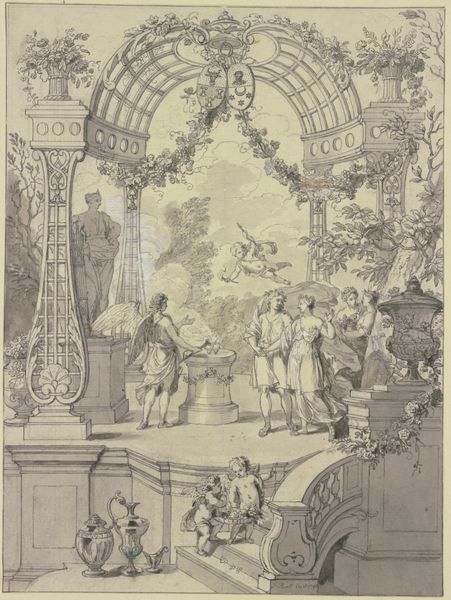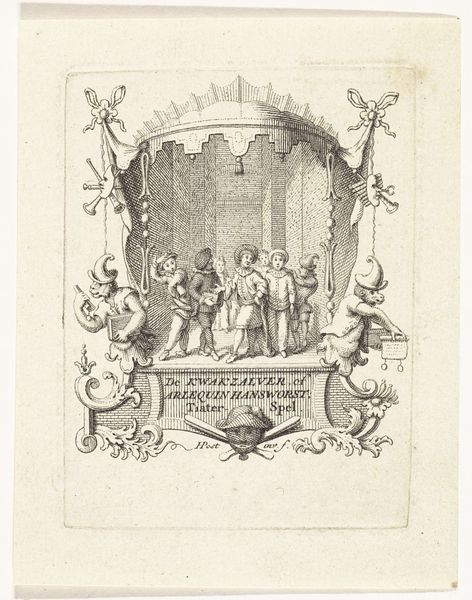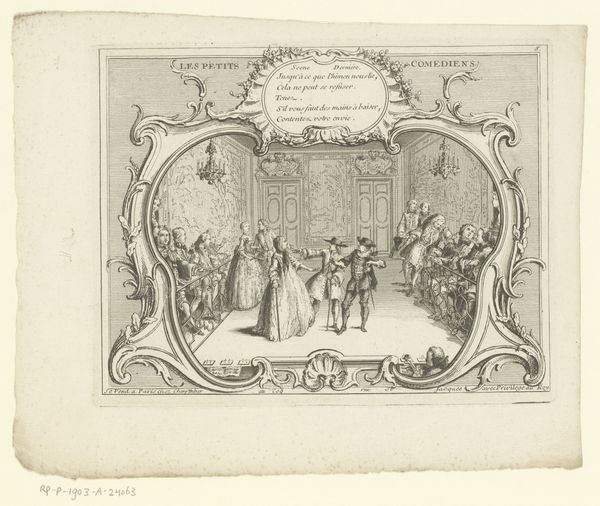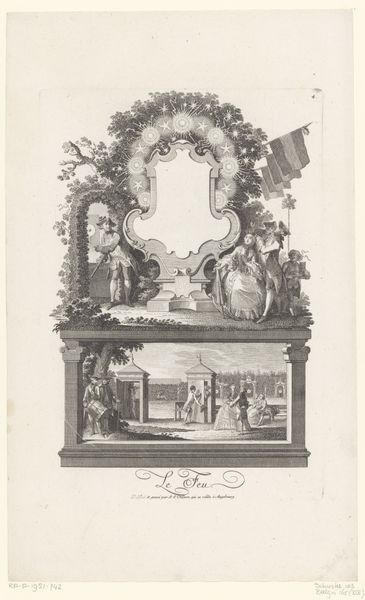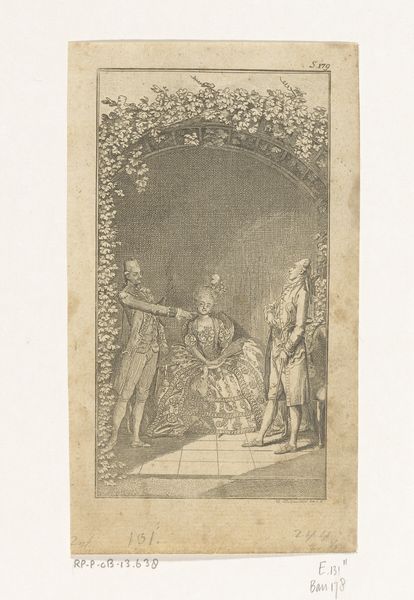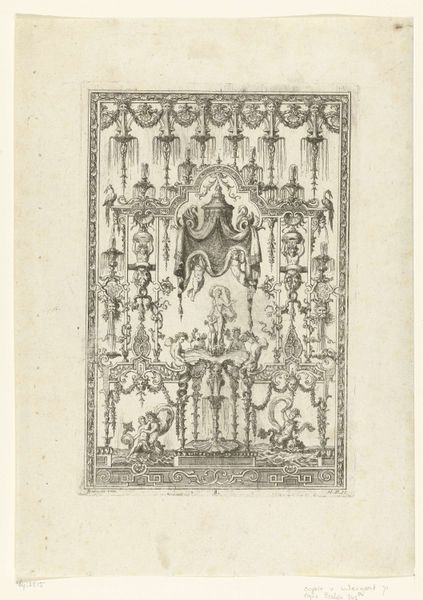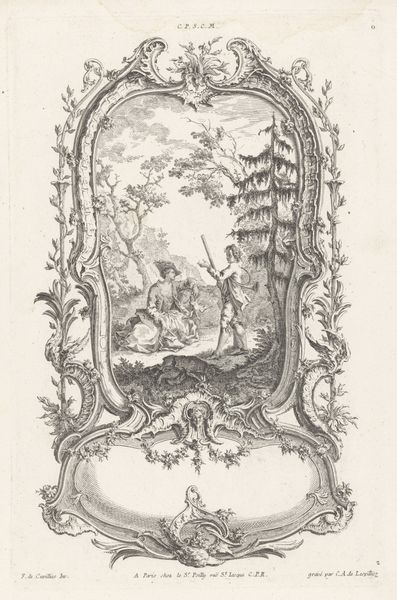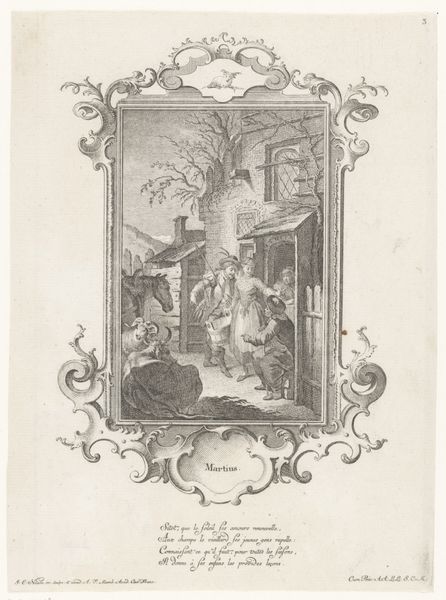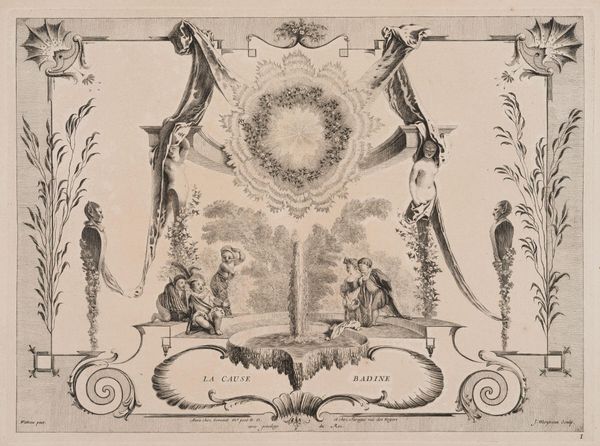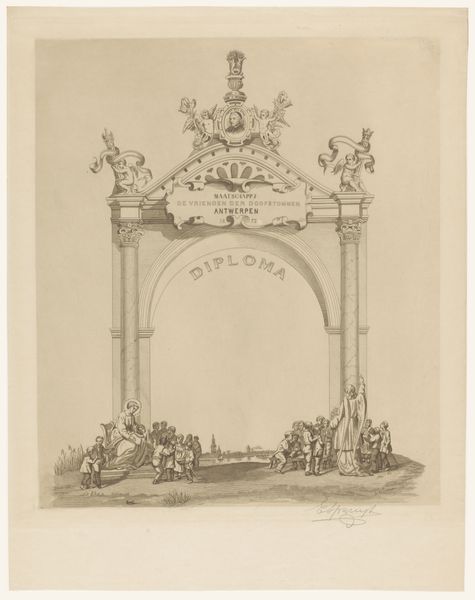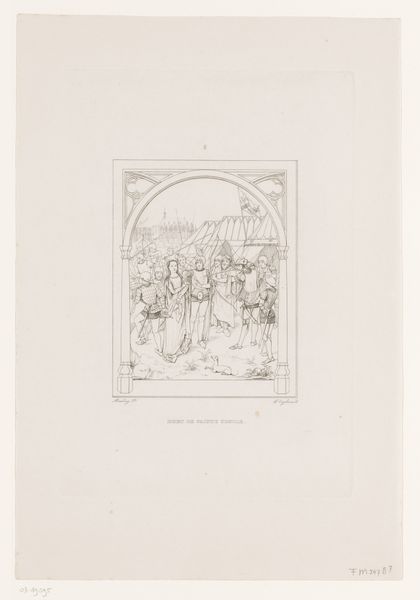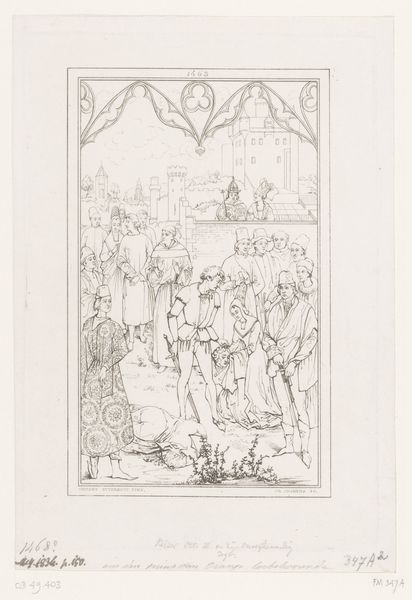
drawing, ink, pen
#
drawing
#
narrative-art
#
baroque
#
pen drawing
#
pen sketch
#
old engraving style
#
ink
#
pen
#
cityscape
#
genre-painting
Dimensions: height 412 mm, width 322 mm
Copyright: Rijks Museum: Open Domain
Curator: Here we have "Wensbrief met activiteiten op straat", a pen and ink drawing by Jacobus Rijckhoff the Younger, dating from the mid-18th century. It’s a cityscape teeming with life, framed within a baroque decorative border, presumably for an invitation. What's your initial impression? Editor: It feels staged, almost like a theatrical backdrop for a play. The characters are frozen, positioned as if for an audience rather than truly interacting. It reminds me of watching street performers, both the main subject of the framed vignette and the people framing that tableau! Curator: You picked up on the performative aspect of this era brilliantly. Remember, Rijckhoff was operating in a time where image making was controlled, curated. So even ostensibly “genre” scenes, depicting everyday life, were vehicles for projecting power, ideals, aspirations. Think of the frame, and this whole composition, as aspirational wish fulfillment for those who had social and financial clout. Editor: Absolutely. I see the wish fulfilment. The framed narrative shows different moments in what might have been biblical stories, with some allegorical meanings—suggesting virtue and societal order, or at least that what the artist WANTS. I see that there’s visual symmetry in the overall arrangement, perhaps to convey that message through composition as well as the narratives the viewer would see. Curator: Exactly. Now notice the people along the bottom of the composition in 18th century attire, but rather looking out onto this same street scene in another rendition within this work. These carefully rendered people become representative types. By looking so neatly framed, Rijckhoff subtly emphasizes societal hierarchies and class. It speaks volumes about how art shaped public perception and reinforced social norms during this time. Editor: And these same onlookers serve the modern day as something more than social history: they stand in for an aspirational vision. Almost like they long to reach out and touch something ideal in front of them, while remaining themselves. The symmetry does so much in this way. Curator: Precisely. So, by taking in this drawing, we gain insight into Rijckhoff's artistry and its influence during a period of immense social and political change. Editor: It is fascinating how seemingly simple imagery like this can unveil layers of both cultural projection and unspoken social meanings. I now have the strong impulse to step into the scene and mingle with those very composed onlookers.
Comments
No comments
Be the first to comment and join the conversation on the ultimate creative platform.
